Alain Raynaud, the longtime president of the Grand Cercle des Vins de Bordeaux, is never less than forthright or honest when you ask him about a vintage. Take the 2023 one, when we sat down to talk during the primeurs tasting in central London in the second week of April.
“I can’t say I’m very happy with that vintage,” he sighed. “It was one of the most difficult vintages with a range of temperatures: cold, wet, hot, cold and wet.”
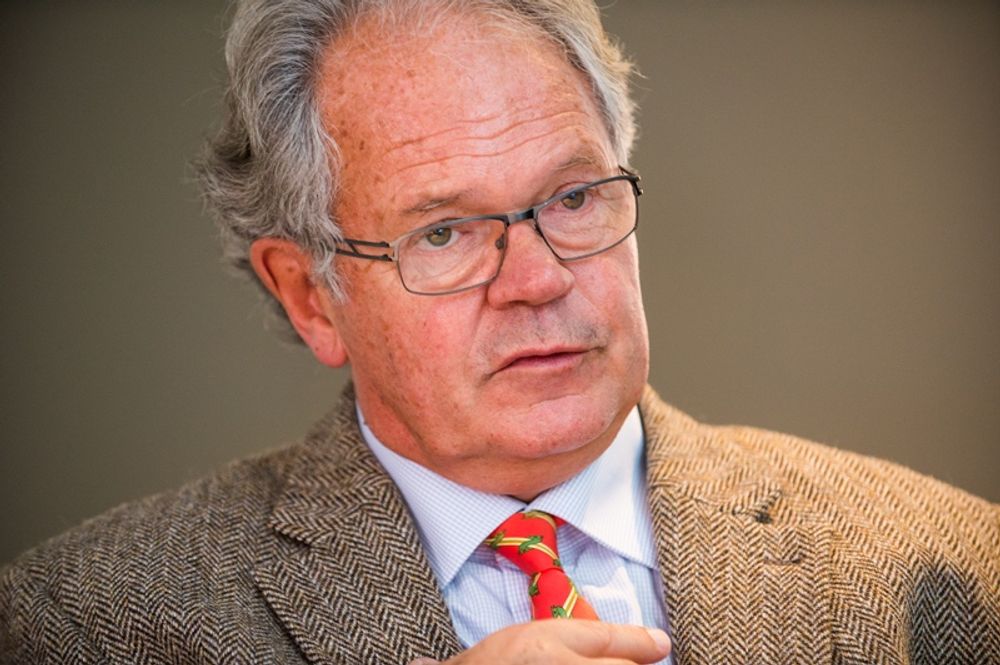
Alain Raynaud Raynaud recommends a reduction of around 15% from the prices for the 2022 primeurs
Long and sustained rain in the early days of September brought the scourge of downy mildew for many. It had also been a major issue earlier in the growing season. Yields suffered as a result, with some growers seeing their crop down by a third or more. Raynaud estimated that 10% of growers were not even able to harvest their fruit.
But, despite the drop in production, there were some terrific wines made on the evidence of the 30 or so brought to London. And the good news is that Raynaud recommends a reduction of around 15% from the prices for the 2022 primeurs. The 2023 vintage, therefore, represents a really good buying opportunity as well as being one for early drinking.
“Nearly everyone had a problem with downy mildew,” Raynaud revealed, confessing that many took steps too late to counter it. “Powdery mildew was easier to treat, but yields were 30-35 hl/ha on average, compared to 45-50 hl/ha in a good year. We had to be careful all the time - the weather changed a lot. Growers have been very clear, taking care of everything at the weekend and not going away."
He added: “Spring was medium temperature but very humid. We want humidity and high temperatures at the same time. After rain in late June, it was very sunny and very hot and dry. Now we knew we had to be very careful with alcohol: 14.5% is ok but 16 or 17 degrees too much. There was a lot of rain at the beginning of September - four days of rain for some and eight days for others. Everyone got it, and some people lost the entire harvest.”
An early drinking vintage
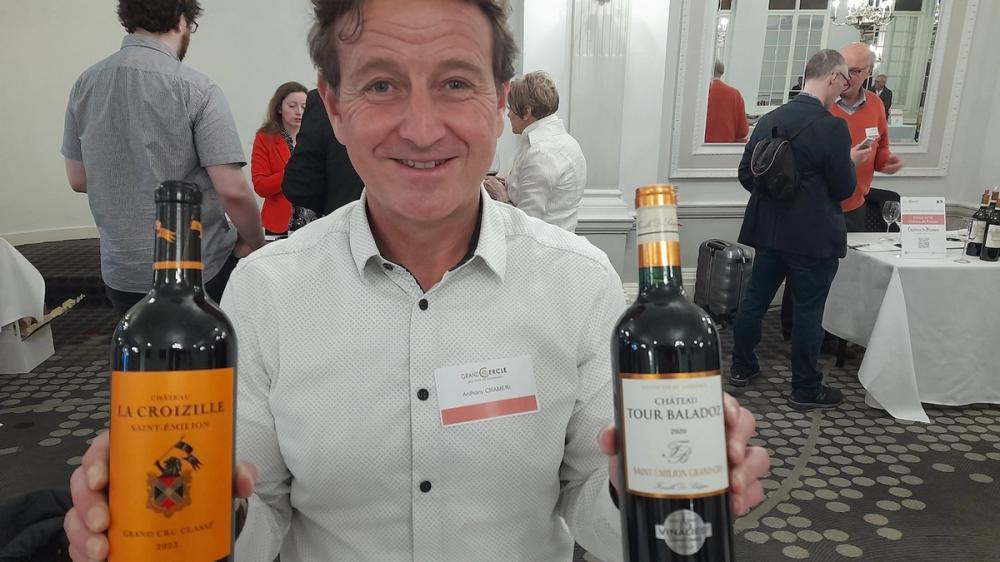
Anthony Crameri
Anthony Crameri, export manager for the De Amour group of five châteaux, happily concurred with Raynaud that a 15% drop in prices is needed.
“I totally agree that a 15% reduction is needed,” he told The Buyer. “It’s not a question of vintage quality but of global demand. We must show the consumers we are friendly; we seriously need to do that. The policy of Bordeaux should be not to increase prices by so much, to try and keep them stable year after year. Go up just a little every year."
Crameri’s two Saint-Emilion Grand Cru Classé labels that were predominantly Merlot - Château La Croizille (90%) and Château Tour Baladoz (77%) - showed particularly well with lovely fruit intensity and supple tannins.
“It’s a very accessible vintage,” added Crameri. “Ready in five years but approachable in a couple. But it doesn't mean both are not wines you cannot keep if you want. The weather was strange - if you bicycled for a couple of minutes, you would go from tropical monsoon to completely dry.
"We had some big heat leading to dust on Merlot berries but we picked in October and had rain just before to wash off the dust. So there was no panic about picking late. The alcohol levels were quite reasonable and the pH levels were a little bit high but no acid was added. Tour Baladoz has location, location, localion - limestone, limestone, limestone and has seen 70% new oak. You can drink both wines early or later.”
Exceptional Cabernet Franc
Another Saint-Emilion Grand Cru Classé - Clos Dubreuil - was likewise a standout, having suffered very few downy mildew issues due to its windy location near Saint-Christophe des Bardes. A quarter of the cépage was Cabernet Franc, a substantial increase on previous years due to its exceptional quality.
Chief executive David Eads, whose American family bought the estate in 2006, feels that the extra Cabernet Franc has raised the quality level from "good to great". With both Michel Rolland and Alain Raynaud consulting, the estate is benefiting from expert guidance.

Christophe Le Bail
Unusually given the heat and ripeness, one Saint-Emilion Grand Cru estate even had to deacidify (by 0.5g/l).
“It was a very ripe vintage but we had 13.8% abv as well as very low pH and high acidity due to our big clay,” Château Blanche Hermine owner, Christophe Le Bail, said of his grand vin (95% Cabernet Franc, 5% Merlot). “My yields were down to 23 hl/ha from 45 or 50, but downy mildew was not the problem. This was because butterflies laid eggs in some of my Cabernet Franc.”
He sells none of his annual production of 12,000 bottles to La Place and wants “to get some UK distribution if I can find it". He still has 2,000 bottles of his excellent 2016 vintage, which showed very well.
The battle with downy mildew
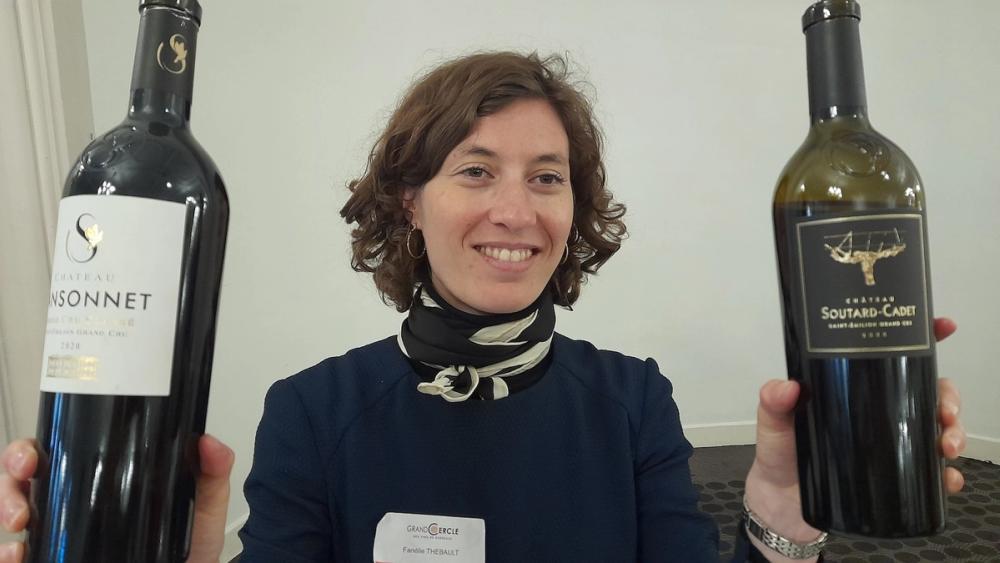
Fanelie Thebault
It was likewise a vintage of great freshness for Saint-Emilion Grand Cru Classé winery, Château Sansonnet, whose yields of 33hl/ha were only slightly down. Nearby Château Soutard-Cadet also returned near-normal yields of 25 hl/ha from its 2.7 hectares of old vines, although staff had to battle particularly hard against downy mildew.
“We had a really reactive team who sprayed at the right time, and on Sundays if necessary,” said sales manager, Fanelie Thebault. The blend of 85% Merlot, 10% Cabernet Franc and 5% Petit Verdot, with its velvety tannins, impressed along with the Sansonnet (a very similar cépage but with Cabernet Sauvignon instead of Petit Verdot). Another impressive Saint-Emilion Grand Cru Classé wine was Château Laroze, whose blend comprised all five Bordeaux varietals.
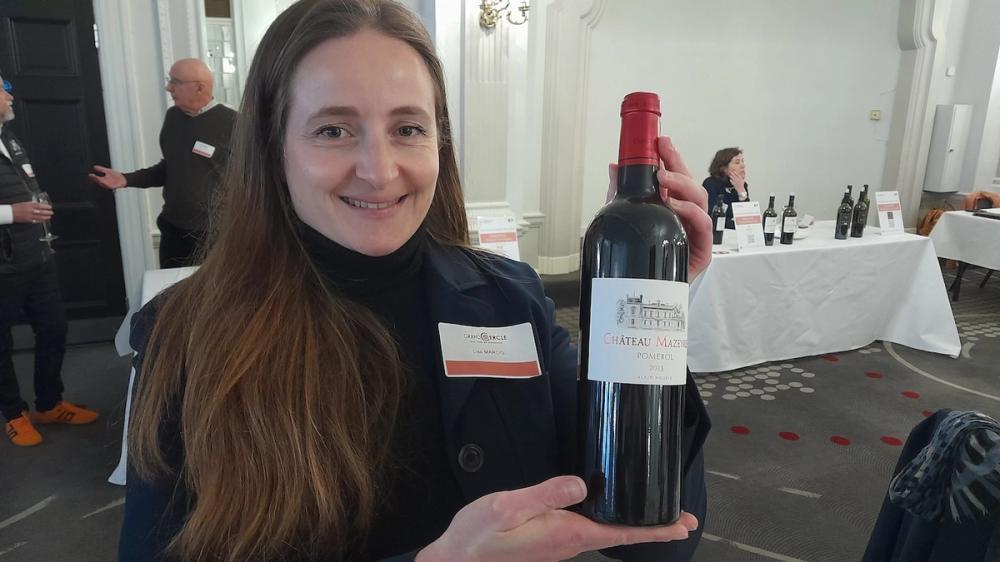
Lisa Marois
One of the biggest Right Bank producers, the biodynamically-certified Pomerol estate of Château Mazeyres, whose typical output is 100,000 bottles per annum, lost around 10% of production to downy mildew.
“We are happy it was not more than that,” said communications manager, Lisa Marois. “Yields were about 35 hl/ha. We used more Merlot in the blend [86% compared to 78% in 2022] due to the generosity of it from lots of sun. The big rains in early September were a challenge but we kept the concentration, and the wine is elegant and fresh. In 2016, we started using concrete eggs, in ’19 foudres, and in ’20 amphorae. We use all three to get more complexity and have 30% new oak maximum.”
Marois added that the UK is “a market we would like to develop a bit". The excellent 2020 vintage is still available.
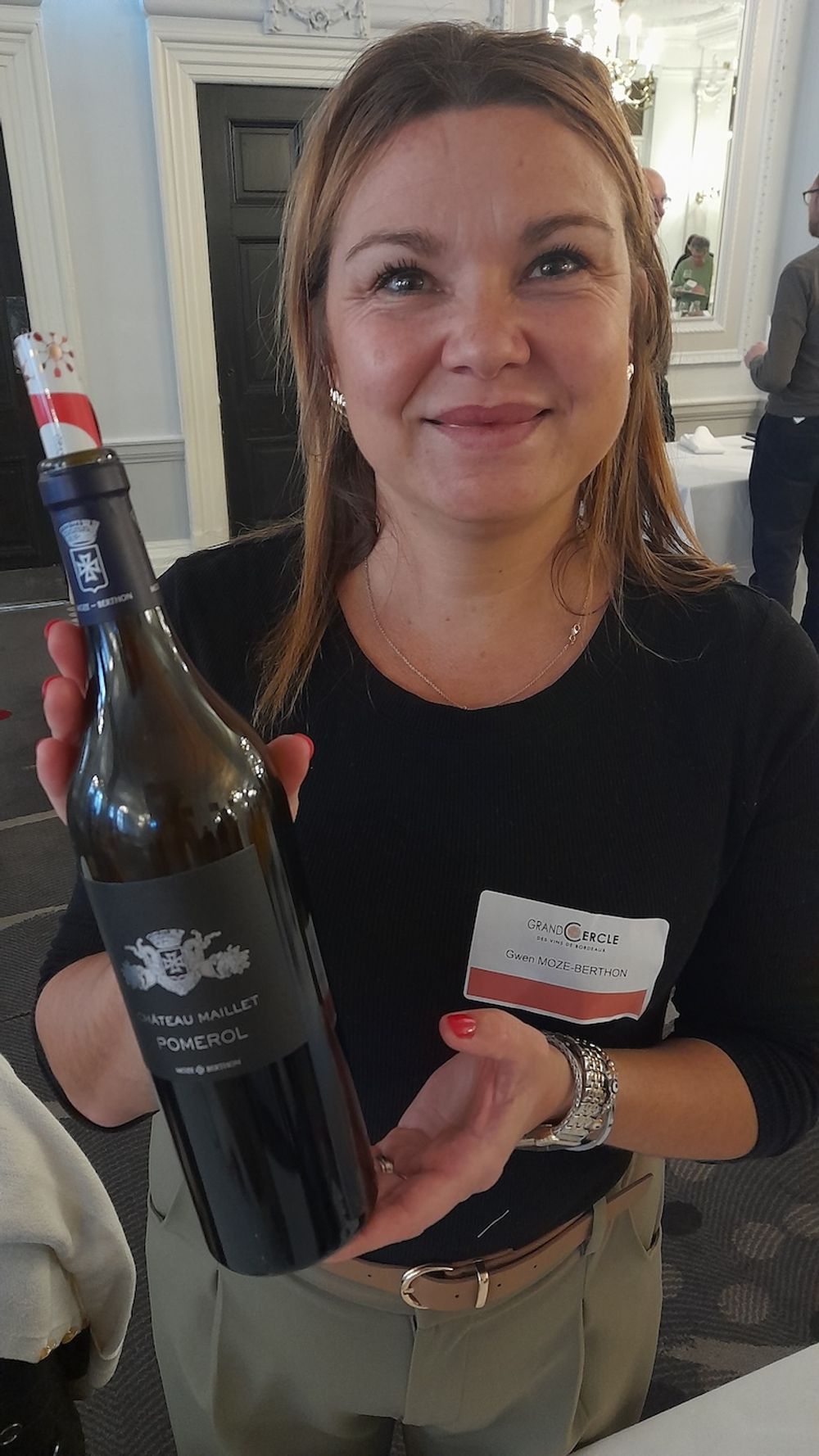
Gwen Moze-Berthon
Château Maillet is another Pomerol estate that is keen to find a UK importer. Joint owner, Gwen Moze-Berthon, was understandably "very happy" with the 2023 vintage from her 2.5 hectares of predominantly Merlot and Cabernet Franc 50-year old vines. “The rain in early September was not such a problem for us,” she said.
“Yields are a bit less but there is beautiful ripeness and tannins, and the wine handles 100% new oak very well.”
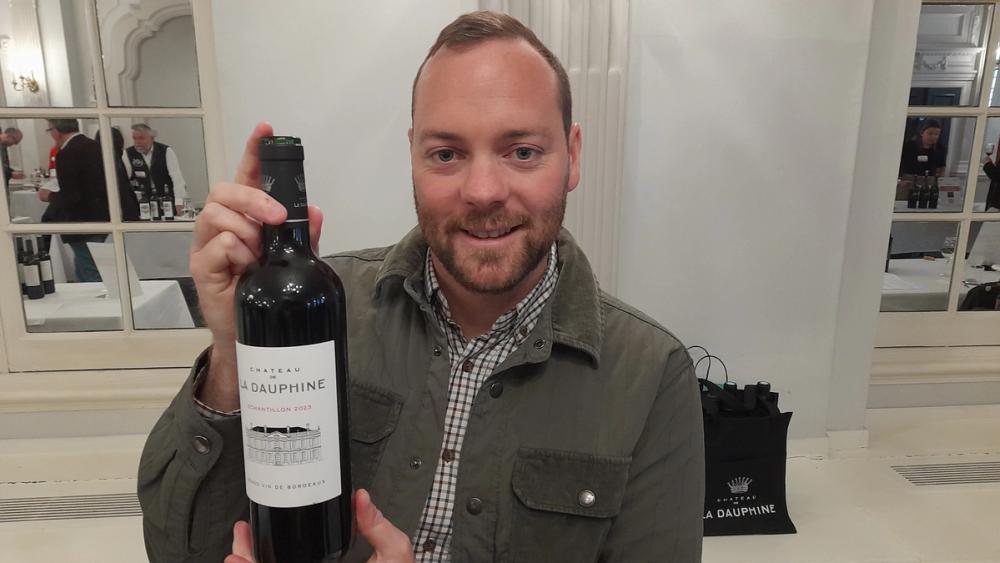
Benjamin Barreau
Fronsac suffered generally lower levels of downy mildew than elsewhere, with Château de La Dauphine even reporting higher than average yields.
“We had no problems with mildew, being close to the river and hills,” Benjamin Barreau, said its brand ambassador. “We’re quite happy with 2023, and our yields are even better than normal - over 40hl/ha when we usually get 35-40.”
Certified organic since 2015, and employing some biodynamic practices, La Dauphine has produced an enticing wine (13.5% abv) with some very generous fruit (Cabernet Franc in the blend being increased from 10 to 20%).
Encouraging earlier drinking

Margaux Braastad Arbo
The approachability of the 2023s was underlined by Château La Vieille Cure’s grand vin (78% Merlot, 19% Cabernet Franc, 3% Cabernet Sauvignon). Indeed, the tannins of its 2020 vintage were more overt than those of the 2023.
“We’re using amphorae which brings more silkiness and means you enjoy the wines a bit earlier,” Margaux Braastad Arbo, the winery’s sales manager, said.
“I think that’s the main challenge in Bordeaux. We don’t want to produce wines that you have to age 20 years. The idea is to have a wine that is ready to drink right now that you can really enjoy, but will also keep for 10 to 20 years if you wish. That is why 2023 is a great image of what we want to do - it’s the true reflection of our terroir. It will age very well as it has this nice acidity and concentration. We’re still using 40% new oak although we're going to reduce that.”
Two other Fronsac châteaux, Dalem and de La Huste, also produced some excellent 2023s. The latter, with its soft tannins and appealing red fruit, is a good mid-market wine for early drinking, while the much more complex Dalem’s freshness and firmer tannins gives it a longer drinking window.
Brigitte Roullier-Loussert, owner of both estates, produces around 60,000 bottles of each and has been working with leading consultant oenologist Eric Boissenot.
“Dalem is already sold to La Place but I would like to sell more La Huste here,” she said. Boissenot has hailed Dalem’s 15 different as "wonderful terroir" and warned against over-extraction (advice that has been followed). It contains 89% Merlot, 10% Cab Franc and 1% Malbec.
Difficulty converting to organic in 2023
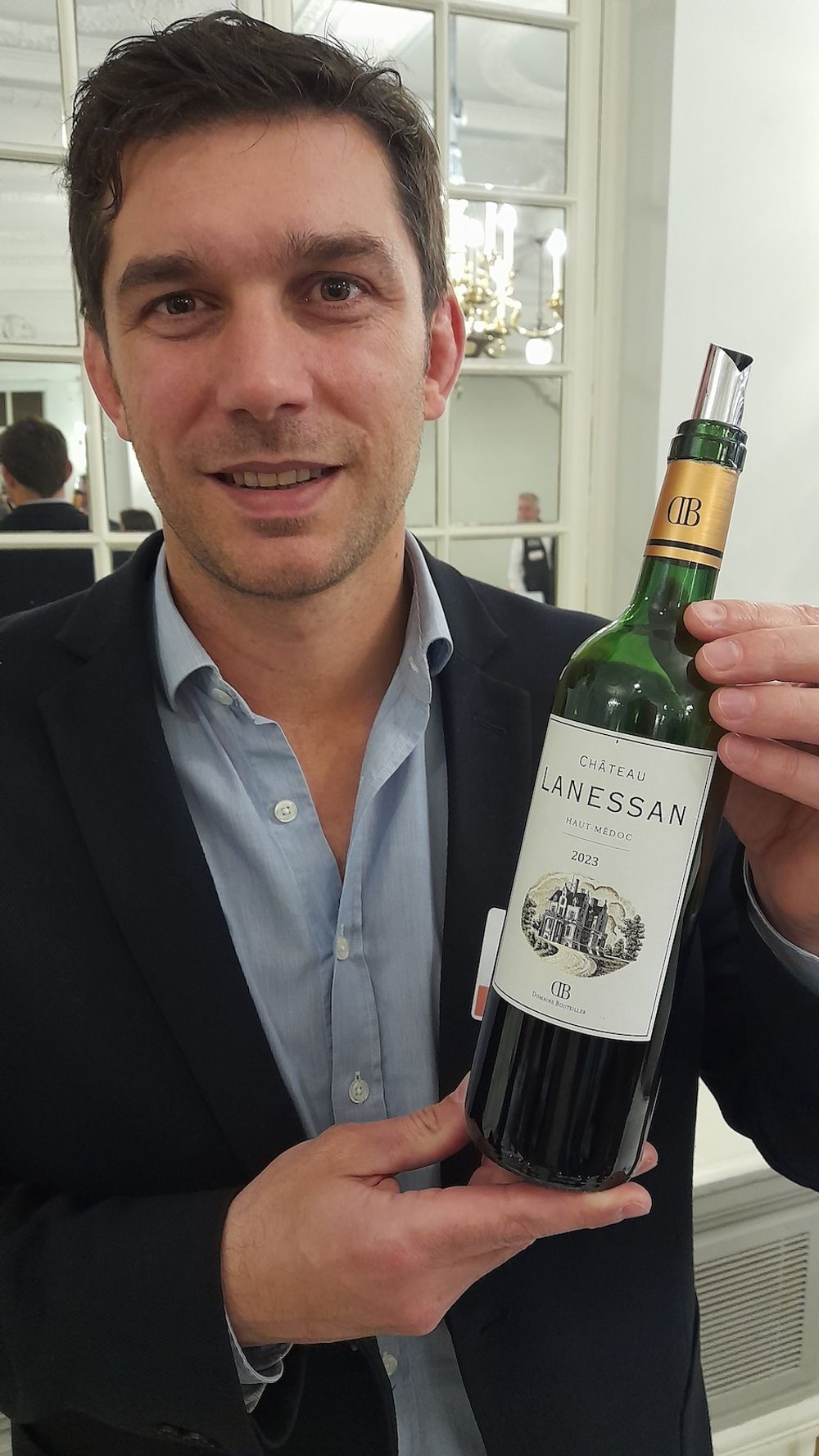
Pierre Delage
In the Haut-Médoc, Pierre Delage, director-general of Château Lanessan, revealed that two of the other Domaine Bouteiller châteaux - Belle-Vue and Cambon La Pelouse - were obliged to stop their conversion to organic farming due to disease pressure.
“We had so many problems with downy mildew and had to spray against it as many as 22 times last year at both Lanessan and Belle-Vue,” he said. “Some other estates even sprayed 26 or 27 times.”
As a result, yields fell drastically - around 50% on Bouteiller estates - with some plots returning as little as 10hl/ha. The quality, though, was unaffected with Lanessan’s quite tight tannins marking it out as one to lay down while Belle-Vue’s softer tannins (despite as much as 20% Petit Verdot - ‘the DNA of the wine’ in Delage’s words) will allow it to be drunk earlier.
Belle-Vue borders Margaux, where Château Le Coteau also had a major fight on their hands against downy mildew. Owners Eric and Christel Léglise barely took a day off from caring for their 12.5 hectares of vines. “Just my husband, myself and a worker were working every day,” said Christel. “It was a lot of manual work, taking off the leaves with disease and on top especially. It was very rainy in springtime but July and after was very sunny, allowing us good maturity.”
With generous fruit and very well-integrated tannins, this is another wine for early drinking in four of five years time (57% Cabernet Sauvignon, 24% Merlot, 12% Cab Franc, 7% Petit Verdot).

Anne-Laure Levraud
In Cadillac, the organic producer Château de Haut Coulon has made a fine Merlot-dominant blend (with 18% Petit Verdot and 21% Cabernet Sauvignon). “We managed to control downy mildew, and 2023 was very good for us,” said export manager Anne-Laure Levraud. “We are using 80% concrete truncated tanks and 20% new oak. The circulation of the wine is good, although different to concrete eggs.”
She is another seeking UK distribution.
Summing up....
To conclude, 2023 was a particularly tricky vintage, with downy mildew posing a serious threat both early and late in the growing season. Thanks largely to it, the yield across Bordeaux was low (27 million litres less than 2022 at 37 hl/ha) but 7 million litres more than in 2021. It was a very warm summer, allowing all black grapes to attain both phenolic and physiological ripeness at very similar times. Some very good quality wines have been made with many suitable for early drinking within three to five years. Significantly, prices are likely to be much more competitive than those of 2022.
































